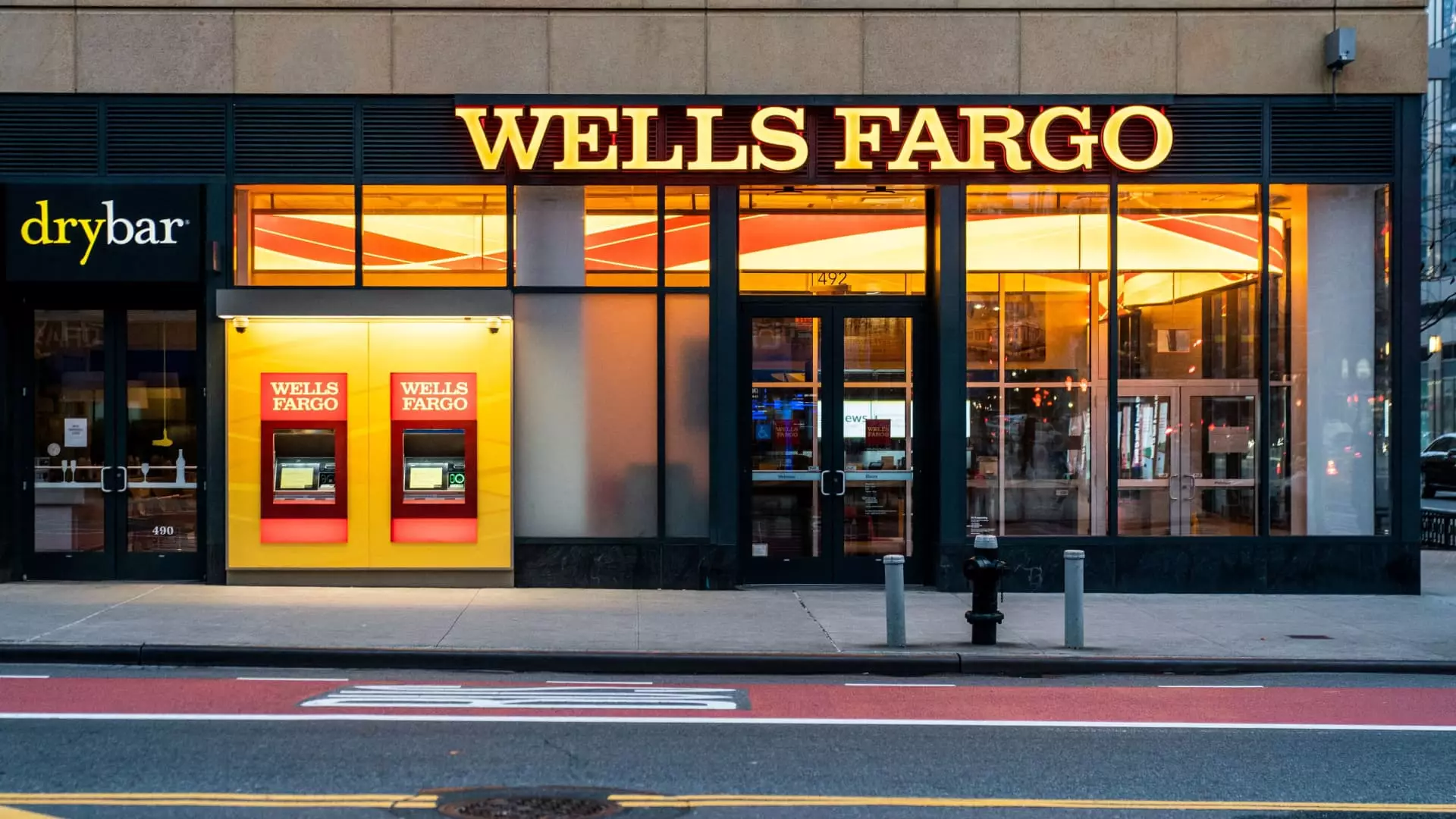Wells Fargo’s latest quarterly earnings have sparked conversations that traverse the spectrum of optimism and caution. Fueled by stable income from investment banking and wealth management, the bank reported adjusted earnings per share of $1.39, representing a 16% increase from the previous year. This figure, however, has been somewhat distorted by several special items, leaving some analysts attentive to the fine print rather than merely the headlines. The expectations from Wall Street were slightly more conservative, estimating $1.24, underscoring a reality where profits look strong on the surface but are plagued by underlying uncertainties.
With a revenue of $20.15 billion falling shy of expectations of $20.75 billion, one cannot help but scrutinize the fundamentals driving this performance. The decline in net interest income—down 6% year over year to $11.50 billion—raises disquieting questions about the bank’s core lending capabilities amidst an evolving economic landscape. It’s a wake-up call to recognize that while segments like non-interest income have shown resilience, the dependency on investment fees and commissions might not provide a solid foundation for future growth.
Leadership and Policy Ramifications
CEO Charlie Scharf’s remarks on the volatile economic backdrop are particularly noteworthy. His acknowledgment of the Trump administration’s unpredictable trade policies suggests that Wells Fargo is navigating perilous waters. While it’s commendable that Scharf supports efforts to level the trade playing field for the United States, the risks associated with these “significant actions” he references cannot be dismissed. The call for a “timely resolution” is not just a corporate platitude but a realistic acknowledgment that America’s economic trajectory relies on effective governance.
Looking ahead, Scharf speaks to potential volatility into 2025, painting a picture of cautious optimism tethered to policy outcomes. For a center-right thinker like myself, this perspective seems both pragmatic and prescient. We need leaders who can balance ambition with realism, navigating complicated global issues while keeping American interests at the forefront. The immediate concerns demand attention, but they also offer a platform for responsible leadership to shine amidst uncertainty.
Buybacks: A Risky Strategy?
In a bold maneuver, Wells Fargo repurchased 44.5 million shares worth $3.5 billion during the first quarter. At first glance, such buyback initiatives often serve as signals of a company’s confidence in its financial health. However, this move may also indicate a reluctance to invest in long-term growth opportunities. Instead, funds are being funneled back to shareholders, potentially at the expense of innovation and sustainable expansion.
The bank also set aside $932 million for credit losses, managing risk but simultaneously reflecting an uncertain outlook on economic resilience. This dual strategy of rewarding shareholders while shoring up reserves speaks volumes about the balancing act American banks must perform in the current climate.
In the context of light volatility in financial markets and a shifting economic landscape, Wells Fargo’s latest quarter may be a case study in the complexities of corporate finance. For those holding shares, these moves might be seen as optimistic; yet, for those who observe closely, the undercurrents of uncertainty remind us that the path ahead isn’t paved with certainty. As investors, we must remain vigilant to both profit margins and broader economic signals, which may very well define the banking sector’s landscape in the coming years.

